I need to register user in the system. User cannot exist without a Role (and he surely cannot exist without login and password). Administrator is supposed to be able to add new users by selecting role, writing login/password and some user information. Login/password/security concerns are implemented as separate application/BC (authentication context), roles and permissions are in authorization context and user information is in separate account management context. How can I implement user registration process if all these contexts could be in theory deployed on separate machines? For now I'm using application interface that uses infrastructure service implementation to synchronously and atomically send all needed commands to different BCs (currently it is the same big application).
